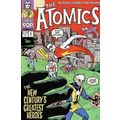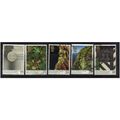Riley, Bridget - June 30th Bassacs, 1987 - abstract - art postcard
- Condition : Used
- Dispatch : 2 Days
- Brand : None
- ID# : 200135202
- Quantity : 1 item
- Views : 218
- Location : United Kingdom

- Seller : justthebook (+1703)
- Barcode : None
- Start : Sat 10 Apr 2021 09:51:15 (EDT)
- Close : Run Until Sold
- Remain : Run Until Sold
Checks/Cheques
 for 1 item(s) edit
for 1 item(s) edit
Shipping Calculator
More Listings from This Seller view all
Seller's Description
- Art Postcard
- Work of art title: June 30th Bassacs, 1987
- Artist (if known): Bridget Riley
- Media or other details: gouache
- Publisher / Gallery: Royal Academy of Arts / Piano Noble Fine Paintings, London
- Postally used: no
- Stamp & postmark details (if relevant):
- Size: Modern
- Notes & condition details:
NOTES:
Size: 'Modern' is usually around 6in x 4in or larger / 'Old Standard' is usually around 5½in x 3½in. Larger sizes mentioned, but if you need to know the exact size please ask as this can vary.
All postcards are not totally new and are pre-owned. It's inevitable that older cards may show signs of ageing and use, particularly if sent through the post. Any faults other than normal ageing are noted.
Stock No.: A1057
Please ask if you need any other information and I will do the best I can to answer.
------------------------------------------------
Postage and packing charge should be showing for your location (contact if not sure).
UK - PayPal, Cheque (from UK bank) or postal order
I will give a full refund if you are not fully satisfied with the postcard.
----------------------------------------------
Bridget Louise Riley CH CBE (born 24 April 1931) is an English painter known for her singular op art paintings.[1] She lives and works in London, Cornwall and the Vaucluse in France.[2]
Riley was born in Norwood, London in 1931.[1] Her father, John Fisher Riley, originally from Yorkshire, had been an Army officer. He was a printer by trade and owned his own business. In 1938 he relocated the printing business, together with his family, to Lincolnshire.[3]
At the beginning of World War II her father, a member of the Territorial Army, was mobilised, and Riley, together with her mother and sister Sally, moved to a cottage in Cornwall.[4] The cottage, not far from the sea near Padstow, was shared with an aunt who was a former student at Goldsmiths' College, London. Primary education came in the form of irregular talks and lectures by non-qualified or retired teachers.[5] She attended Cheltenham Ladies' College (1946–1948) and then studied art at Goldsmiths' College (1949–52), and later at the Royal College of Art (1952–55).[6]
Between 1956 and 1958, she nursed her father, who had been involved in a serious car crash. She suffered a breakdown due to the deterioration of her father's health. After this she worked in a glassware shop. She eventually joined the J. Walter Thompson advertising agency, as an illustrator, where she worked part-time until 1962. The Whitechapel Gallery exhibition of Jackson Pollock in the winter of 1958 had an impact on her.[5]
Her early work was figurative and semi-impressionist. Between 1958 and 1959, her work at the advertising agency showed her adoption of a style of painting based on the pointillist technique.[7] Around 1960, she began to develop her signature Op Art style consisting of black and white geometric patterns that explore the dynamism of sight and produce a disorienting effect on the eye and produces movement and colour.[6] In the summer of 1960, she toured Italy with her mentor Maurice de Sausmarez, and the two friends visited the Venice Biennale with its large exhibition of Futurist works.[5]
Early in her career, Riley worked as an art teacher for children from 1957–58 at the Convent of the Sacred Heart, Harrow (now known as Sacred Heart Language College). At the Convent of the Sacred Heart, she began a basic design course. Later she worked at the Loughborough School of Art (1959), Hornsey College of Art, and Croydon College of Art (1962–64).[8]
In 1961, she and her partner Peter Sedgley visited the Vaucluse plateau in the South of France, and acquired a derelict farm which they eventually transformed into a studio. Back in London, in the spring of 1962, Victor Musgrave of Gallery One held her first solo exhibition.[5]
In 1968 Riley, with Sedgley and the journalist Peter Townsend, created the artists' organisation SPACE (Space Provision Artistic Cultural and Educational), with the goal of providing artists large and affordable studio space.[9][10]
It was during this period that Riley began to paint the black and white works for which she first became known. They present a great variety of geometric forms that produce sensations of movement or colour. In the early 1960s, her works were said to induce sensation in viewers as varied as seasick and sky diving. From 1961 to 1964, she worked with the contrast of black and white, occasionally introducing tonal scales of grey. Works in this style comprised her first 1962 solo show at Musgrave's Gallery One, as well as numerous subsequent shows. For example, in Fall, a single perpendiculars curve is repeated to create a field of varying optical frequencies.[15] Visually, these works relate to many concerns of the period: a perceived need for audience participation (this relates them to the Happenings, which were common in this era), challenges to the notion of the mind-body duality which led Aldous Huxley to experiment with hallucinogenic drugs;[16] concerns with a tension between a scientific future which might be very beneficial or might lead to a nuclear war; and fears about the loss of genuine individual experience in a Brave New World.[17] Her paintings since 1961, have been executed by assistants.[4] She meticulously plans her composition's design with preparatory drawings and collage techniques; her assistants paint the final canvases with great precision under her instruction.[18]
Riley began investigating colour in 1967, the year in which she produced her first stripe painting.[19] Following a major retrospective in the early 1970s, Riley began travelling extensively. After a trip to Egypt in the early 1980s, where she was inspired by colourful hieroglyphic decoration, Riley began to explore colour and contrast.[20] In some works, lines of colour are used to create a shimmering effect, while in others the canvas is filled with tessellating patterns. Typical of these later colourful works is Shadow Play.
Some works are titled after particular dates, others after specific locations (for instance, Les Bassacs, the village near Saint-Saturnin-lès-Apt in the south of France where Riley has a studio).[21]
Following a visit to Egypt in 1980–81, Riley created colours in what she called her 'Egyptian palette'[22] and produced works such as the Ka and Ra series, which capture the spirit of the country, ancient and modern, and reflect the colours of the Egyptian landscape.[7] Invoking the sensorial memory of her travels, the paintings produced between 1980 and 1985 exhibit Riley's free reconstruction of the restricted chromatic palette discovered abroad. In 1983, for the first time in fifteen years, Riley returned to Venice to once again study the paintings that form the basis of European colourism. Towards the end of the 1980s, Riley's work underwent a dramatic change with the reintroduction of the diagonal in the form of a sequence of parallelograms used to disrupt and animate the vertical stripes that had characterized her previous paintings.[23] In Delos (1983), for example, blue, turquoise, and emerald hues alternate with rich yellows, reds and white.[24]
.....
Listing Information
| Listing Type | Gallery Listing |
| Listing ID# | 200135202 |
| Start Time | Sat 10 Apr 2021 09:51:15 (EDT) |
| Close Time | Run Until Sold |
| Starting Bid | Fixed Price (no bidding) |
| Item Condition | Used |
| Bids | 0 |
| Views | 218 |
| Dispatch Time | 2 Days |
| Quantity | 1 |
| Location | United Kingdom |
| Auto Extend | No |




















